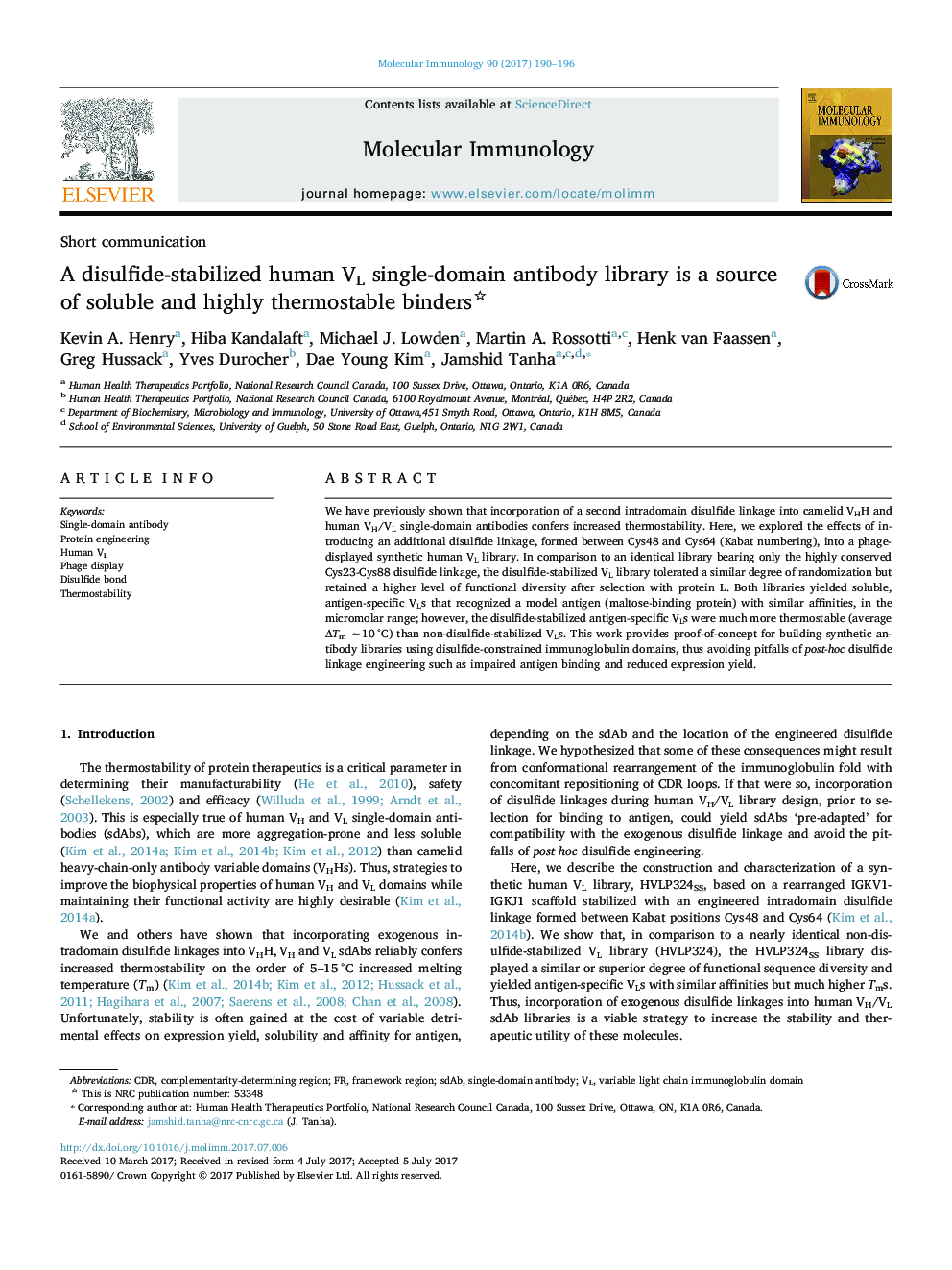| Article ID | Journal | Published Year | Pages | File Type |
|---|---|---|---|---|
| 5591905 | Molecular Immunology | 2017 | 7 Pages |
Abstract
We have previously shown that incorporation of a second intradomain disulfide linkage into camelid VHH and human VH/VL single-domain antibodies confers increased thermostability. Here, we explored the effects of introducing an additional disulfide linkage, formed between Cys48 and Cys64 (Kabat numbering), into a phage-displayed synthetic human VL library. In comparison to an identical library bearing only the highly conserved Cys23-Cys88 disulfide linkage, the disulfide-stabilized VL library tolerated a similar degree of randomization but retained a higher level of functional diversity after selection with protein L. Both libraries yielded soluble, antigen-specific VLs that recognized a model antigen (maltose-binding protein) with similar affinities, in the micromolar range; however, the disulfide-stabilized antigen-specific VLs were much more thermostable (average ÎTm â¼10 °C) than non-disulfide-stabilized VLs. This work provides proof-of-concept for building synthetic antibody libraries using disulfide-constrained immunoglobulin domains, thus avoiding pitfalls of post-hoc disulfide linkage engineering such as impaired antigen binding and reduced expression yield.
Keywords
Related Topics
Life Sciences
Biochemistry, Genetics and Molecular Biology
Molecular Biology
Authors
Kevin A. Henry, Hiba Kandalaft, Michael J. Lowden, Martin A. Rossotti, Henk van Faassen, Greg Hussack, Yves Durocher, Dae Young Kim, Jamshid Tanha,
